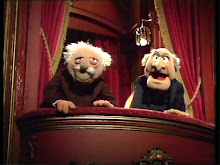
Lester William Polsfuss
(June 9, 1915 – August 13, 2009)
Les Paul was a pioneer in the development of the solid-body electric guitar which "made the sound of rock and roll possible." His many recording innovations include overdubbing, delay effects such as "sound on sound" and tape delay, phasing effects, and multitrack recording.
His innovative talents extended into his unique playing style, including licks, trills, chording sequences, fretting techniques and timing which set him apart from his contemporaries and inspired many of the guitarists of the present day.
He was born in Waukesha, Wisconsin to George and Evelyn Polsfuss. The family name was first simplified by his mother to Polfuss before he took his stage name of Les Paul.
Paul first became interested in music at the age of eight, when he began playing the harmonica. After an attempt at learning to play the banjo, he began to play the guitar. By 13, Paul was performing semi-professionally as a country-music guitarist. At the age of 17, Paul played with Rube Tronson's Texas Cowboys, and soon after he dropped out of high school to join Wolverton's Radio Band in St. Louis, Missouri. In the 1930s, Paul worked in Chicago in radio, where he performed jazz music.
Paul was dissatisfied with the acoustic guitars that were sold in the mid 1930s and began experimenting with a few designs for an electric model on his own. Famously, he created "The Log," which was one of the first solid-body electric guitars (1939).
In 1948, Paul was injured in a near-fatal automobile accident, which shattered his right arm and elbow. Doctors set his arm at an angle that would allow him to cradle and pick the guitar.
In 1949, Les Paul married the singer Iris Colleen Summers, who later changed her name to Mary Ford at his suggestion. Capitalising on his innovative sound-on-sound technique, he multi-tracked his wife's vocals and his instrumental backing. The couple had a string of hits in the first half of the 1950s. In their radio and television appearances, Les Paul used what he called the Les Paulveriser, a backstage electronics system controlled from a black box attached to his guitar.
It was at this time that the Gibson Les Paul guitar – a manufactured guitar based on Paul's solid-body concept of the late 1930s – burst on to the market. The Gibson Les Paul was deliberately conceived as a high-end instrument. The contract between Les Paul and Gibson, endured until the early 1960s, when he fell out with the company over design changes. He continued to play, with his wife, and by 1962, when they divorced, they had cut 36 gold discs together.
Subsequently Les Paul increasingly exchanged his life as a professional musician for one as a professional inventor. During the 1970s he recorded two albums with the influential country guitarist Chet Atkins. One of the results, Chester and Lester (1976), won them a Grammy for best country instrumental performance.
In recent years, Les Paul (in his nineties) continued to play a regular Monday night session at a jazz club in New York, where rock stars such as Bruce Springsteen and Led Zeppelin's Jimmy Page sometimes came to listen to him.
Paul, whose ex-wife died in 1977, had three sons and an adopted daughter. Paul was the godfather of rock guitarist Steve Miller of the Steve Miller Band, to whom Paul gave his first guitar lesson. In 1978, Paul and ex-wife Ford were inducted into the Grammy Hall of Fame. In 1988, Paul was inducted into the Rock and Roll Hall of Fame by Jeff Beck. Paul was inducted into the National Inventors Hall of Fame in May 2005 for his development of the solid-body electric guitar. In 2006, Paul was inducted into the National Broadcasters Hall of Fame.
Les Paul died of complications from pneumonia at White Plains Hospital in White Plains, NY. His family and friends were by his side. His attorney Michael Braunstein said that Paul had been "in and out of the hospital" because of illness.
RIP
___

No comments:
Post a Comment